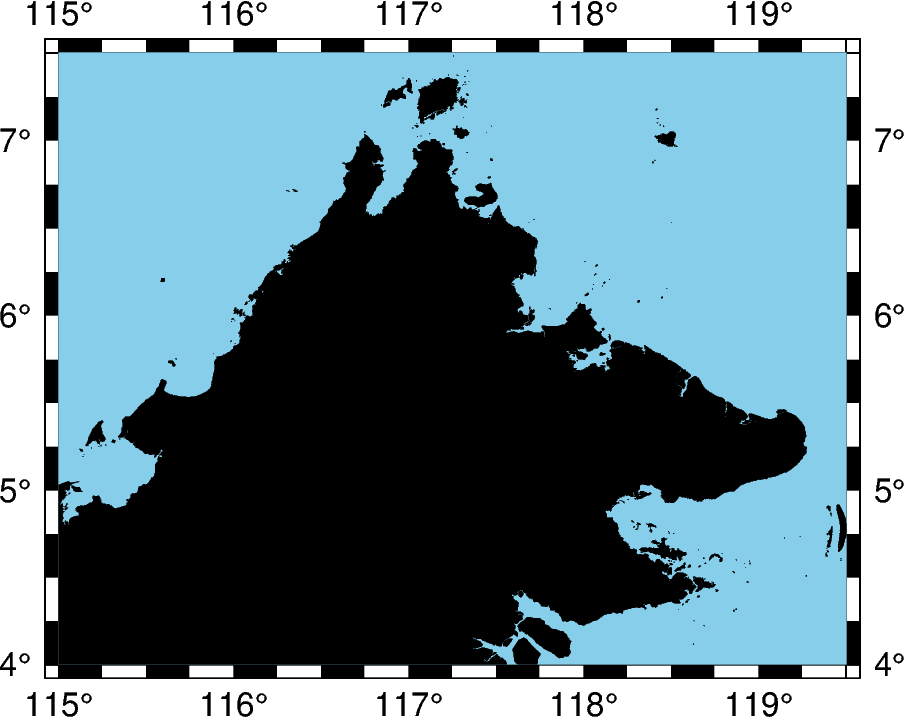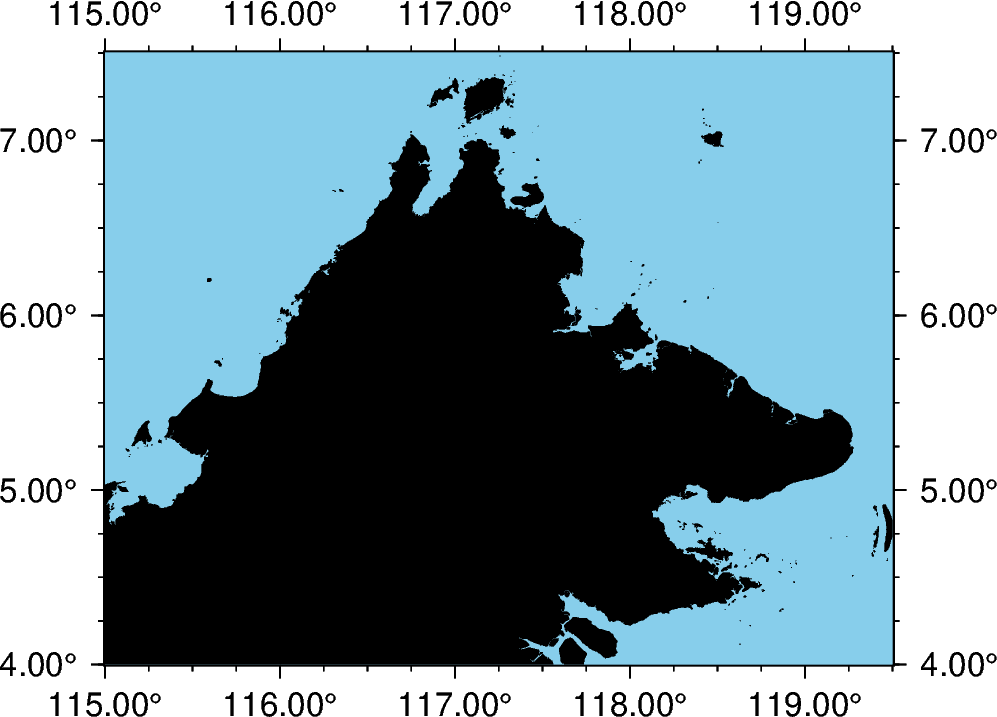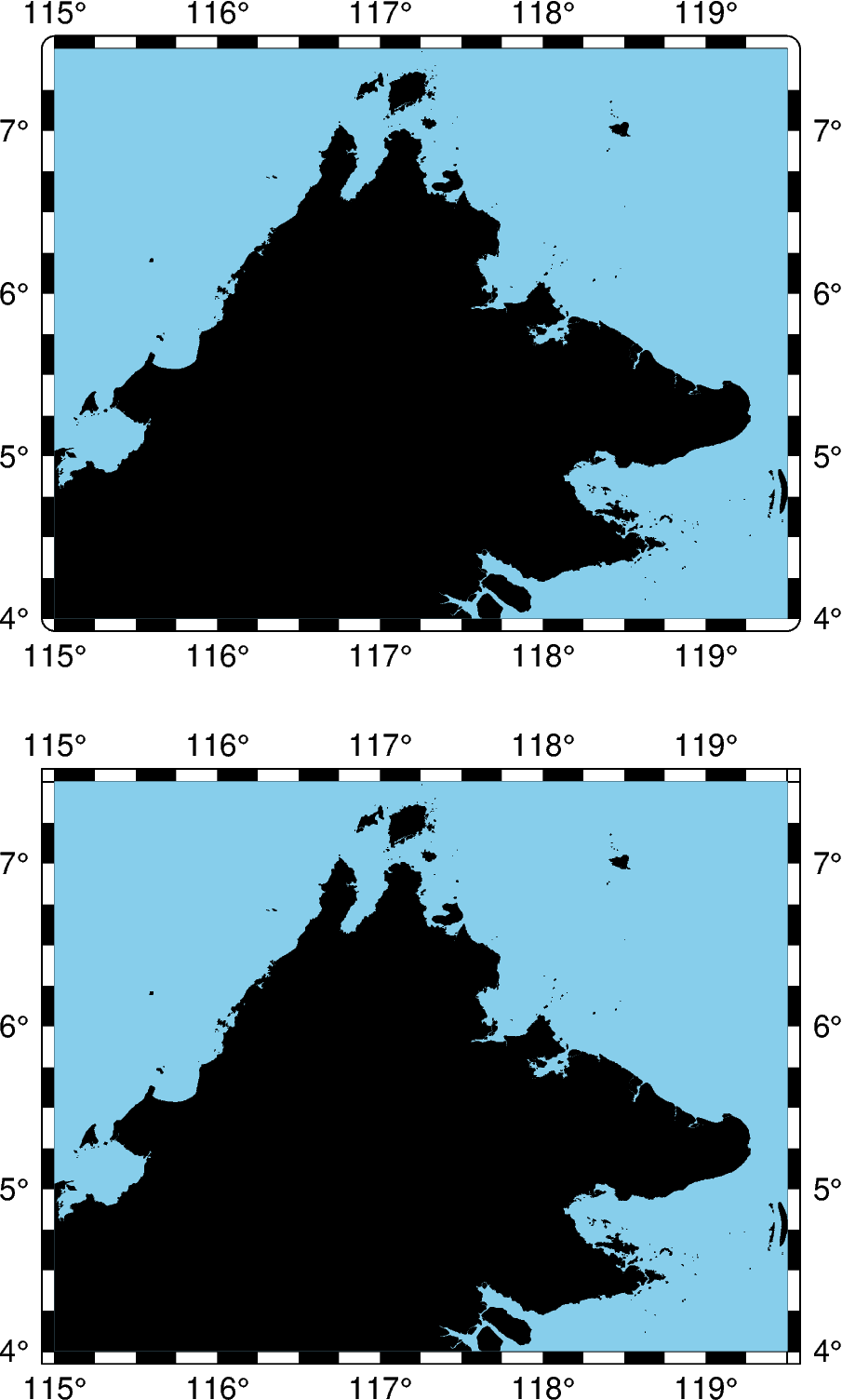Note
Click here to download the full example code
Configuring PyGMT defaults¶
Default GMT parameters can be set globally or locally using pygmt.config.
Note
This tutorial assumes the use of a Python notebook, such as IPython or Jupyter Notebook.
To see the figures while using a Python script instead, use
fig.show(method="external") to display the figure in the default PDF viewer.
To save the figure, use fig.savefig("figname.pdf") where "figname.pdf"
is the desired name and file extension for the saved figure.
import pygmt
Configuring default GMT parameters¶
Users can override default parameters either temporarily (locally) or permanently
(globally) using pygmt.config. The full list of default parameters that can be
changed can be found at https://docs.generic-mapping-tools.org/latest/gmt.conf.html.
We demonstrate the usage of pygmt.config by configuring a map plot.
# Start with a basic figure with the default style
fig = pygmt.Figure()
fig.basemap(region=[115, 119.5, 4, 7.5], projection="M10c", frame=True)
fig.coast(land="black", water="skyblue")
fig.show()

Out:
<IPython.core.display.Image object>
Globally overriding defaults¶
The MAP_FRAME_TYPE parameter specifies the style of map frame to use, of which there
are 5 options: fancy (default, seen above), fancy+, plain, graph
(which does not apply to geographical maps) and inside.
The FORMAT_GEO_MAP parameter controls the format of geographical tick annotations.
The default uses degrees and minutes. Here we specify the ticks to be a decimal number
of degrees.
fig = pygmt.Figure()
# Configuration for the 'current figure'.
pygmt.config(MAP_FRAME_TYPE="plain")
pygmt.config(FORMAT_GEO_MAP="ddd.xx")
fig.basemap(region=[115, 119.5, 4, 7.5], projection="M10c", frame=True)
fig.coast(land="black", water="skyblue")
fig.show()

Out:
<IPython.core.display.Image object>
Locally overriding defaults¶
It is also possible to temporarily override the default parameters, which is very
useful for limiting the scope of changes to a particular plot. pygmt.config is
implemented as a context manager, which handles the setup and teardown of a GMT
session. Python users are likely familiar with the with open(...) as file: snippet,
which returns a file context manager. In this way, it can be used to override a parameter
for a single command, or a sequence of commands. An application of pygmt.config
as a context manager is shown below:
fig = pygmt.Figure()
# This will have a fancy+ frame
with pygmt.config(MAP_FRAME_TYPE="fancy+"):
fig.basemap(region=[115, 119.5, 4, 7.5], projection="M10c", frame=True)
fig.coast(land="black", water="skyblue")
# Shift plot origin down by 10cm to plot another map
fig.shift_origin(yshift="-10c")
# This figure retains the default "fancy" frame
fig.basemap(region=[115, 119.5, 4, 7.5], projection="M10c", frame=True)
fig.coast(land="black", water="skyblue")
fig.show()

Out:
<IPython.core.display.Image object>
Total running time of the script: ( 0 minutes 4.894 seconds)